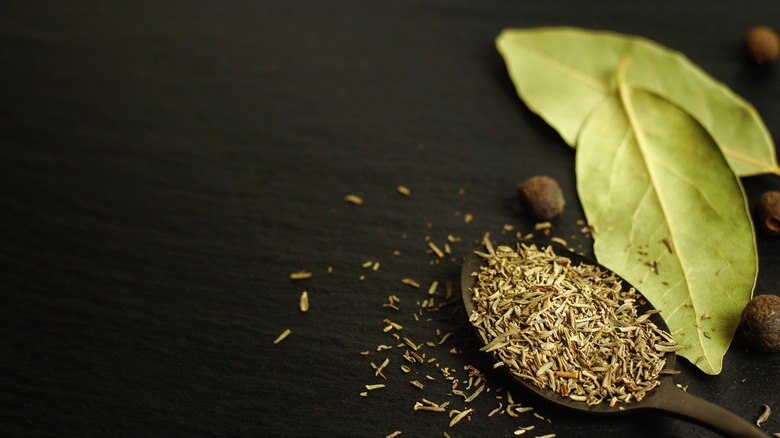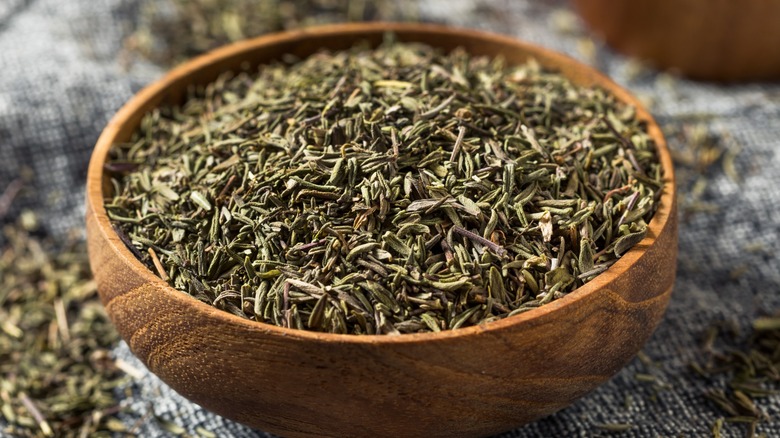If You're Out Of Bay Leaves, Use Dried Thyme
Your recipe calls for bay leaves, and you're out. What should you do? Many people think bay leaves are unnecessary — even celebrity chef Ina Garten is a bay leaf skeptic. But aficionados of soups, stews, and other slow-cooked dishes know that they add a little extra depth of flavor and aroma. While missing bay leaves might not necessitate a trip to the store, you shouldn't skip over the ingredient entirely. Instead, consider a substitute.
Fortunately, a few herbs and spices can imitate the aromatic and herbaceous leaves — and you probably already have them in your pantry. Oregano works in a pinch, but thyme does a better job matching the subtle flavor of bay leaves. That said, thyme still has a stronger flavor than bay, especially when fresh. So, remember to use a light hand. While bay and thyme come from distinctly different plants, they have similar flavor profiles. Both have a slightly minty, slightly peppery flavor — and both are popular in Mediterranean cuisine.
How to substitute thyme for bay leaves
Generally, you should substitute ¼ teaspoon of dried thyme per bay leaf. The same goes for oregano if you don't have thyme on hand. Many people grow fresh thyme: After all, a small pot of thyme is easier to fit on a kitchen windowsill than a 6-foot-tall bay laurel tree. Generally, you should substitute fresh thyme for dry thyme at a 3:1 ratio, so one bay leaf would translate to ¾ teaspoon of fresh thyme. However, fresh thyme can be especially sharp and pungent — something to keep in mind when cooking delicate dishes.
Thyme can also come in handy if you notice that your bay leaves are past their peak. Dry bay leaves have a shelf life of around one to three years, but start to lose their potency after just a few months. Check to see if your bay leaves are still fresh by snapping them in half or rubbing them between your fingers. If you can't smell anything, consider substituting your bay for thyme — especially if the thyme you have on hand is fresher.

